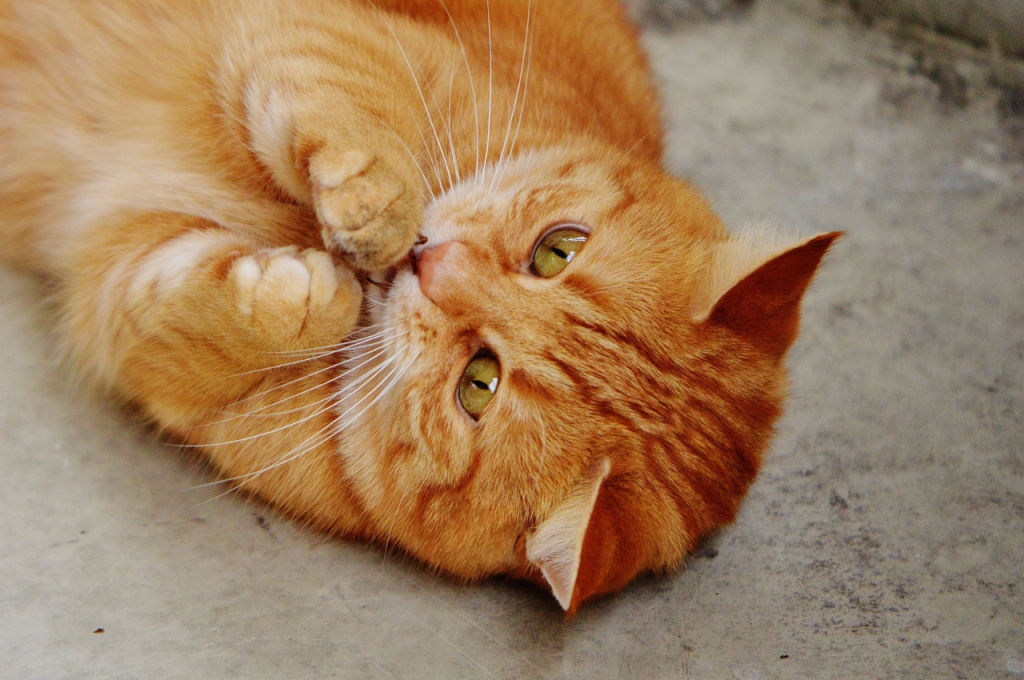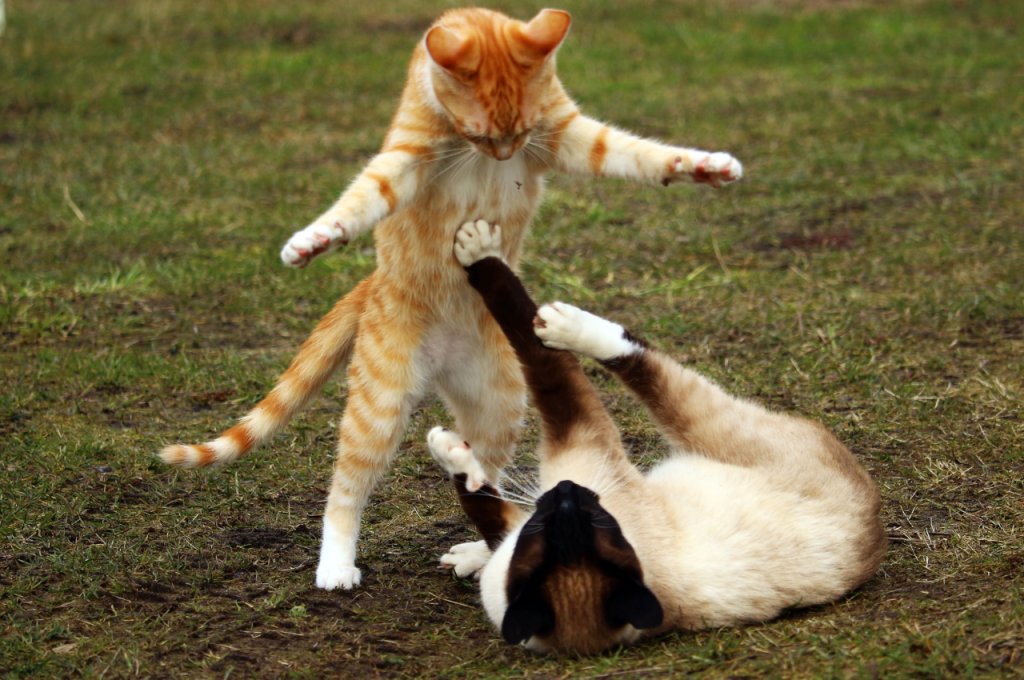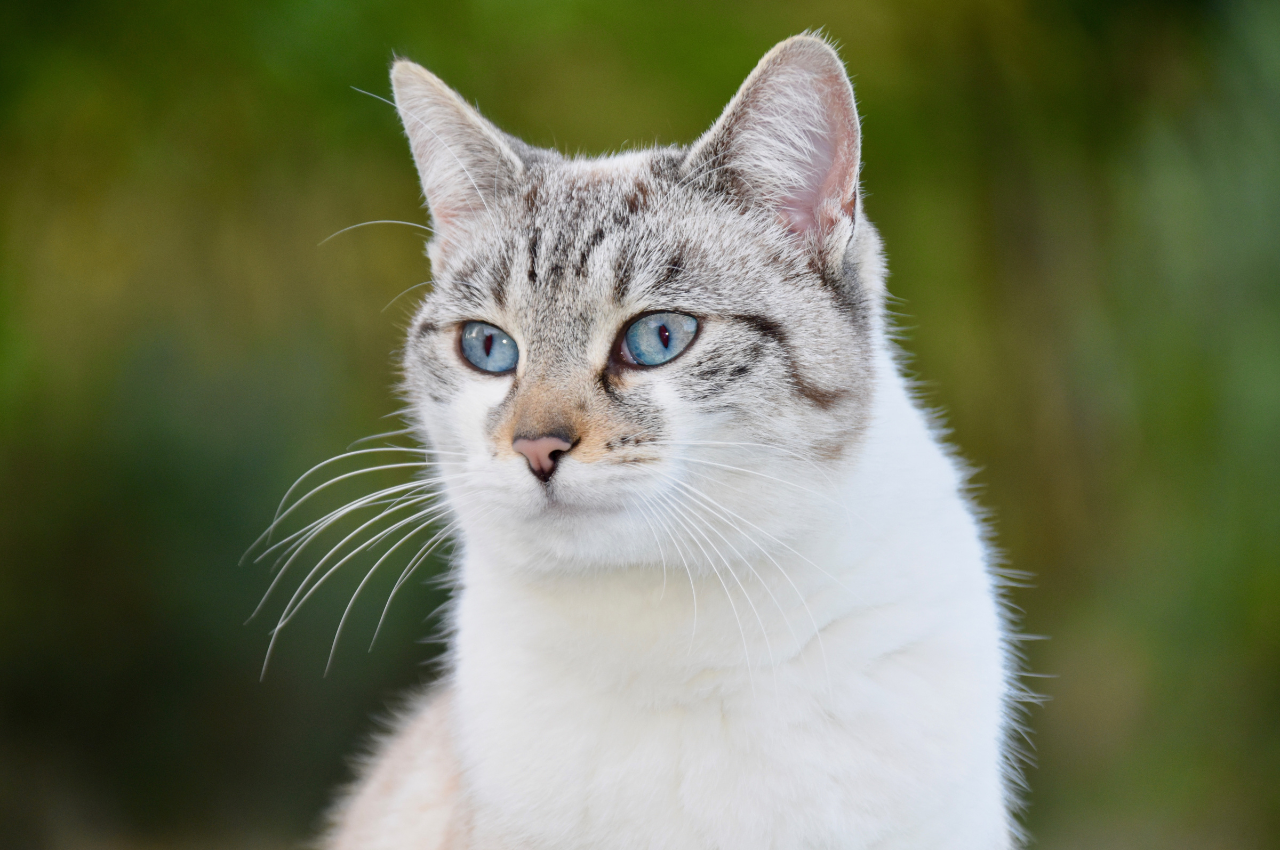A normal behavior pattern in cats includes grooming, hunting, sleeping, and territorial marking. Cats are known for their independent and curious nature.
Observing your cat’s behaviors can help you understand their needs better and strengthen your bond with them. From kneading and purring to playing and exploring, each behavior contributes to their overall well-being. Recognizing what is typical for your cat can also alert you to any changes in behavior that may indicate health issues or stress.
By familiarizing yourself with your cat’s normal behavior patterns, you can ensure they lead a happy and healthy life.
Introduction To Feline Normalcy
Cats are fascinating creatures with unique behaviors that may seem strange to us humans. Understanding what is considered normal behavior for cats is essential for their overall well-being and our relationship with them. In this article, we will explore common behaviors exhibited by cats and why it is important to recognize and respect their natural instincts.

Identifying Common Behaviors
Cats have a wide range of behaviors that can vary from one individual to another. However, there are several common behaviors that most cats exhibit:
- Scratching: Cats have a natural instinct to scratch surfaces to mark their territory and keep their claws healthy.
- Purring: Purring is a sign of contentment and relaxation in cats. It can also indicate that they are seeking attention or expressing pleasure.
- Grooming: Cats are known for their meticulous grooming habits. They spend a significant amount of time cleaning their fur to keep it neat and free from dirt and parasites.
- Hunting: Cats are natural predators, and even domesticated cats retain their hunting instincts. They may engage in stalking, pouncing, and playing with toys to satisfy this instinct.
- Meowing: Cats use meowing as a form of communication. They may meow to get attention, express hunger, or communicate other needs.
Why It Matters
Understanding and recognizing normal behavior patterns in cats is crucial for several reasons:
- Health Monitoring: By being familiar with your cat’s typical behavior, you can quickly notice any changes that may indicate an underlying health issue.
- Preventing Stress: Cats are creatures of habit, and sudden changes in behavior can be a sign of stress. Recognizing these changes allows you to address potential stressors and provide a comfortable environment for your cat.
- Bonding and Communication: By understanding your cat’s behaviors, you can better communicate and bond with them. This mutual understanding strengthens your relationship and enhances your cat’s overall well-being.
In conclusion, familiarizing yourself with normal behavior patterns in cats is essential for their physical and emotional well-being. By observing and understanding their behaviors, you can ensure a harmonious and fulfilling life for both you and your feline companion.
The Essence Of Cat Communication
Vocal Cues And Their Meanings
Cats use a variety of vocal cues to communicate their needs and emotions. Meows are typically used to greet humans, request food, or seek attention. Purring indicates contentment, but it can also signal pain or distress. Hissing and growling are signs of fear or aggression, while yowling may indicate discomfort or mating behavior.
Body Language Basics
Cats rely heavily on body language to express themselves. The tail position is a key indicator of a cat’s mood. A high, upright tail signals confidence and happiness, while a puffed-up tail indicates fear or agitation. Ears forward show curiosity or friendliness, while pinned-back ears suggest anxiety or aggression. Slow blinks are a sign of trust and affection in feline communication.
Daily Routines Of A Healthy Cat
Cats are creatures of habit, and their daily routines play a crucial role in maintaining their overall health and well-being. Understanding the normal behavior patterns of cats, including their sleep patterns, feeding habits, and grooming routines, can help cat owners ensure that their feline companions are leading happy and healthy lives.
Sleep Patterns
Cats are known for their love of sleep, and normal sleep patterns are essential for their overall health. On average, cats sleep for 12 to 16 hours a day, with older cats and kittens sleeping even longer. Cats are crepuscular animals, meaning they are most active during dawn and dusk, so it’s normal for them to take frequent naps throughout the day and night.
Feeding And Grooming Habits
Feeding and grooming are integral parts of a healthy cat’s daily routine. Cats are obligate carnivores, so a diet rich in protein is essential for their well-being. They prefer to eat small, frequent meals throughout the day, reflecting their natural hunting behavior. Additionally, cats are meticulous groomers, spending a significant portion of their waking hours grooming themselves to maintain their hygiene and regulate their body temperature.
Play And Predatory Behaviors
Cats exhibit normal predatory behaviors during play, showcasing their natural instincts through stalking, pouncing, and chasing. These behaviors are vital for their physical and mental stimulation, mirroring their hunting patterns in the wild.
Understanding Playtime
Cats are known for their playful nature, and engaging in various forms of play is an essential part of their normal behavior pattern. Playtime is not only enjoyable for cats but also serves several important purposes. It helps them stay physically fit, mentally stimulated, and socially connected with their human companions. Understanding the significance of play in a cat’s life can help pet owners provide appropriate outlets for their feline friends’ energy and instincts.

Natural Hunting Instincts
Cats are natural-born hunters, and their play behaviors often mimic the movements and actions involved in hunting. These instincts are deeply ingrained and play a vital role in a cat’s overall well-being. By engaging in play that imitates hunting, cats can satisfy their natural predatory instincts, even in a domesticated environment. This helps prevent boredom and frustration, promoting a healthier and happier cat.
During playtime, cats may exhibit behaviors such as pouncing, stalking, chasing, and swatting. These actions are reminiscent of a cat’s hunting techniques in the wild, where they would stalk their prey before pouncing on it. Play also allows cats to practice their coordination, agility, and timing, honing their hunting skills for potential real-life situations.
Ensuring A Healthy Play Environment
Providing appropriate toys and play opportunities is essential for encouraging a cat’s natural play and predatory behaviors. Interactive toys, such as feather wands, laser pointers, and puzzle toys, can help simulate hunting scenarios, keeping cats engaged and active. These toys allow cats to chase, capture, and “kill” their prey, satisfying their hunting instincts in a safe and controlled manner.
It’s important to note that while play should imitate hunting, it should never involve real animals or encourage aggressive behavior. Using toys that resemble prey, rather than live animals, ensures the safety and well-being of both cats and potential targets. Additionally, monitoring play sessions and providing regular exercise can help prevent excessive or destructive play behaviors.
In conclusion, understanding play and predatory behaviors in cats is crucial for creating a stimulating and enriching environment for our feline companions. By acknowledging their natural instincts and providing appropriate outlets for play, we can ensure our cats lead happy and fulfilling lives while maintaining a harmonious relationship with them.
Social Interactions Among Cats
Cats are known for their complex social behaviors, often misunderstood by humans. Understanding the social interactions among cats can help pet owners create a harmonious living environment for their feline companions. Social interactions among cats are influenced by various factors, including their territorial behavior, inter-cat communication, and hierarchy within the group.
Territorial Behavior
Cats are territorial animals, marking their territory through scent and visual signals. They may display territorial aggression towards other cats invading their space.
Inter-cat Communication
Inter-cat communication is primarily non-verbal, involving body language, facial expressions, and vocalizations. Cats use these forms of communication to establish dominance, express affection, and resolve conflicts.
Human-cat Relationship Dynamics
Cats exhibit normal behavior patterns by being territorial, grooming themselves, and hunting. They may also display affection through kneading and head bunting. Understanding these behaviors helps strengthen the human-cat relationship and promotes a harmonious coexistence.
Bonding With Your Cat
Developing a strong bond with your cat is crucial.
- Play together regularly to strengthen your connection.
- Provide love and attention to build trust.
- Offer treats as positive reinforcement for good behavior.
Respecting Boundaries
Understanding your cat’s boundaries is key.
- Allow your cat space when needed.
- Avoid forcing interactions if they seem uncomfortable.
- Respect their feeding and sleeping areas.
Warning Signs Of Abnormal Behavior
Cats display normal behaviors like grooming and napping, but changes in behavior can indicate underlying issues.
Recognizing Stress And Anxiety
Changes in appetite, excessive grooming, hiding more, or aggression towards humans are signs of stress.
When To Seek Veterinary Advice
Consult a vet if abnormal behavior persists, especially if accompanied by lethargy or changes in litter box habits.
Fostering A Happy And Healthy Environment
Cats exhibit a range of normal behavior patterns, including grooming, territorial marking, and hunting. Understanding these behaviors helps create a happy and healthy environment for our feline friends.

Creating A Cat-friendly Home
Cats thrive in environments that cater to their natural instincts.
- Provide scratching posts to fulfill their need to sharpen claws.
- Offer cozy hiding spots for their comfort and security.
- Ensure access to perches or high spots for a sense of territory.
The Role Of Routine And Enrichment
Establishing a consistent routine is vital for your cat’s well-being.
- Regular feeding times help maintain a healthy appetite.
- Interactive play sessions prevent boredom and encourage exercise.
- Rotating toys keeps them mentally stimulated and engaged.
Conclusion
Understanding a cat’s behavior patterns is essential for their overall well-being and your happiness as a pet owner. Normal cat behavior includes sleeping for long hours, grooming themselves, and being independent creatures. However, if you notice any sudden changes in their behavior, it’s crucial to seek advice from a veterinarian.
By being attentive to your cat’s behavior patterns, you can ensure a happy and healthy relationship with your feline friend.
